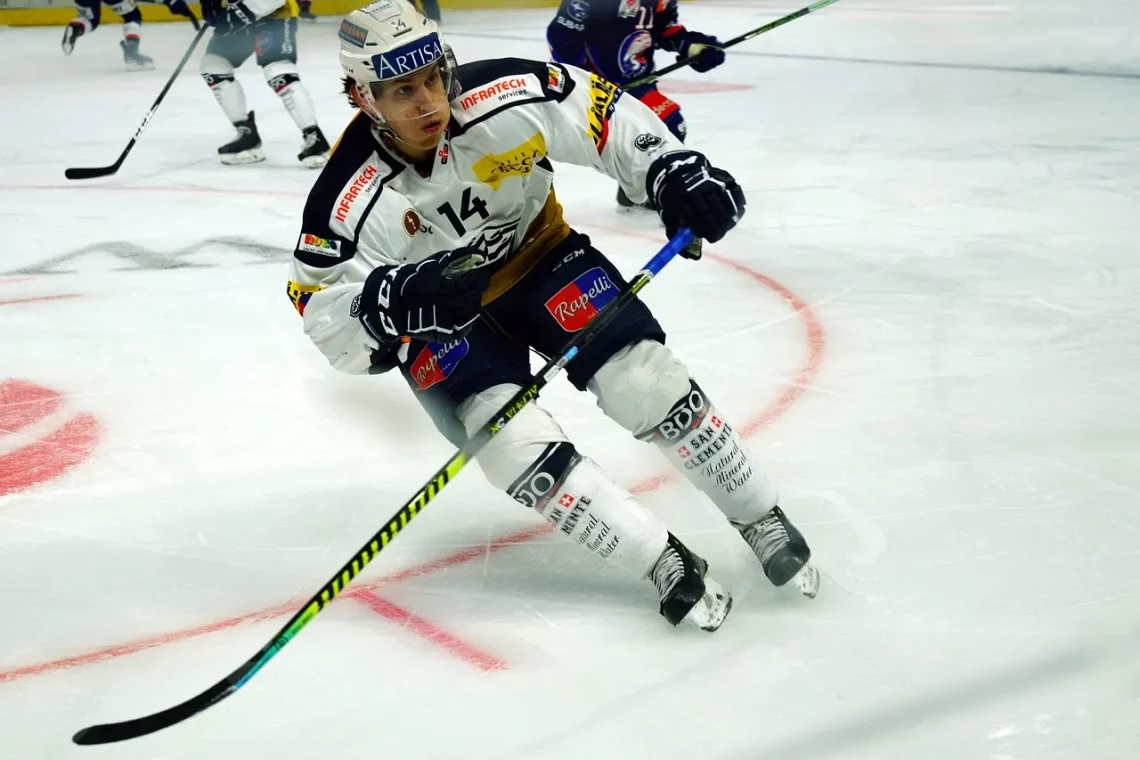
Mastering the Faceoff Position: Strategies for Success in Hockey
Mastering the faceoff position in hockey is crucial for any player looking to excel in the sport. This pivotal moment, where the puck is dropped between two opposing players, can set the tone for the entire game. It’s not just a simple contest; it’s a strategic battle that involves skill, technique, and an understanding of both your opponent’s tendencies and the game situation. Players who can consistently win faceoffs can gain an advantage for their team, creating scoring opportunities and maintaining possession of the puck.
In hockey, the faceoff is more than just an isolated event; it’s a microcosm of the game itself. It requires quick thinking, physical prowess, and a deep understanding of the rules. Players must be prepared not only to win the puck but also to anticipate the movements of their opponents and teammates. The ability to control the puck right after the drop can dictate the pace and flow of the game, making mastering this skill essential for any serious hockey player.
As we delve into effective strategies for excelling in this critical aspect of hockey, we will explore various techniques, mental preparations, and physical conditioning that can enhance a player’s performance in the faceoff circle. By understanding what it takes to dominate this position, players can elevate their game and contribute significantly to their team’s success.
Understanding the Mechanics of a Faceoff
To master the faceoff position, one must first understand the mechanics involved. The faceoff is initiated when the referee drops the puck between two players, usually at designated spots on the ice. Each player must position themselves correctly, ensuring they are within the designated area and adhere to the rules set forth by the league.
Proper stance is critical. Players should adopt a low, balanced position with their knees bent and feet shoulder-width apart. This stance provides stability and quick mobility. The player’s stick should be positioned on the ice, ready to engage as soon as the puck is dropped. Timing is everything; players must be prepared to react instantly when the puck touches the ice.
One effective technique is the “quick draw” approach, where a player focuses on the puck and anticipates the referee’s drop. This involves a combination of strength and agility, as players often use their upper bodies to gain leverage against their opponents. Understanding the opponent’s tendencies can also provide a strategic edge; for instance, if a player is known for leaning forward at the drop, others can exploit this by pulling the puck back quickly.
Moreover, communication with teammates is essential. Players must be aware of their teammates’ positions and strategies, as winning a faceoff is often about more than just individual skill. By coordinating movements and anticipating plays, a player can significantly increase their chances of success.
Ultimately, mastering the mechanics of the faceoff requires practice. Players should engage in drills that simulate game situations, allowing them to refine their techniques and build confidence. Regular practice not only improves individual skills but also fosters team dynamics, making the faceoff a collective effort.
Psychological Preparation and Mindset
The psychological aspect of hockey is often overlooked, yet it plays a pivotal role in a player’s performance, especially in faceoff situations. A winning mindset can make all the difference. Players must cultivate confidence and focus, using mental strategies to prepare for the intensity of the faceoff.
Visualization is a powerful technique used by many athletes. Before stepping onto the ice, players can visualize themselves winning the faceoff, anticipating their opponent’s moves, and executing their strategy flawlessly. This mental rehearsal can enhance a player’s confidence and readiness.
Additionally, players should develop a routine that helps them enter a focused mindset. This could involve specific warm-up exercises, breathing techniques, or even a short mantra to reinforce their determination. Establishing a pre-faceoff routine can ground players, helping them to concentrate on the task at hand.
Another important psychological aspect is resilience. Faceoffs can be unpredictable, and not every attempt will result in a win. Players must learn to bounce back from setbacks, maintaining a positive attitude regardless of the outcome. This resilience not only helps in faceoff situations but also contributes to overall game performance.
Moreover, understanding the psychological tactics used by opponents can be beneficial. Some players may attempt to intimidate or distract during the faceoff. Remaining calm and focused, while being aware of these tactics, allows players to maintain control and execute their strategy effectively.
In summary, the psychological preparation for faceoffs is just as important as the physical skills. By investing time in mental training, players can enhance their performance and increase their chances of winning crucial puck drops.
Physical Conditioning and Strength Training
Physical conditioning is a vital component for any athlete, and mastering the faceoff position is no exception. A strong, agile body can make a significant difference in a player’s ability to win faceoffs and maintain control of the puck.
Strength training should focus on the muscles most engaged during a faceoff. Core strength is essential, as it provides stability and balance. Exercises such as planks, squats, and deadlifts can help build a strong foundation. Additionally, upper body strength is crucial for leveraging against opponents. Incorporating resistance training, such as bench presses and rows, can enhance a player’s ability to push and pull during the faceoff.
Agility drills are equally important. The ability to quickly move in different directions can give players an edge when reacting to the puck. Incorporating ladder drills, cone sprints, and shuttle runs into training routines can improve foot speed and overall agility.
Endurance is another key factor. Faceoffs can be physically demanding, requiring short bursts of energy followed by quick recovery. Players should engage in cardiovascular training, such as interval sprints or cycling, to build stamina and improve their ability to perform at high intensity throughout the game.
Moreover, flexibility should not be overlooked. Stretching and mobility exercises can enhance a player’s range of motion, making it easier to maneuver during the faceoff. Regular stretching routines can help prevent injuries and improve overall performance.
In essence, a comprehensive physical conditioning program that includes strength, agility, endurance, and flexibility training will significantly enhance a player’s ability to master the faceoff position.
Strategies for Winning Faceoffs
Winning faceoffs requires a combination of skill, strategy, and adaptability. Players must be equipped with a variety of techniques to counter different opponents and situations on the ice.
One effective strategy is the use of “puck pulls” or “puck drops,” where the player utilizes their stick to pull the puck back quickly. This technique can be particularly effective against players who rely on brute strength, as it allows for finesse to triumph over power.
Another strategy involves using deception. Players can feign one movement while executing another, confusing their opponents. For instance, a player might lean in one direction but then quickly shift to the other, throwing off the timing of the opponent.
Awareness of the game situation also plays a critical role. Depending on the score, time left in the game, and player positioning, strategies may need to be adjusted. For example, if a team is on a power play, a player might focus on winning the puck back to a teammate positioned for a shot rather than trying to gain possession for themselves.
Teamwork is essential during faceoffs. Players should develop a system where they communicate their strategies and anticipate each other’s movements. This synergy can lead to more successful faceoff outcomes and, ultimately, scoring opportunities for the team.
Lastly, studying opponents can provide valuable insights. Understanding their tendencies, strengths, and weaknesses can help players devise strategies tailored to specific opponents, increasing their chances of winning faceoffs.
In conclusion, mastering the faceoff position in hockey requires a multifaceted approach. By understanding the mechanics, preparing psychologically, conditioning physically, and implementing effective strategies, players can significantly enhance their performance and contribute to their team’s success on the ice.
This article is for informational purposes only and does not constitute medical advice. Always consult a healthcare professional for any health-related issues or concerns.




